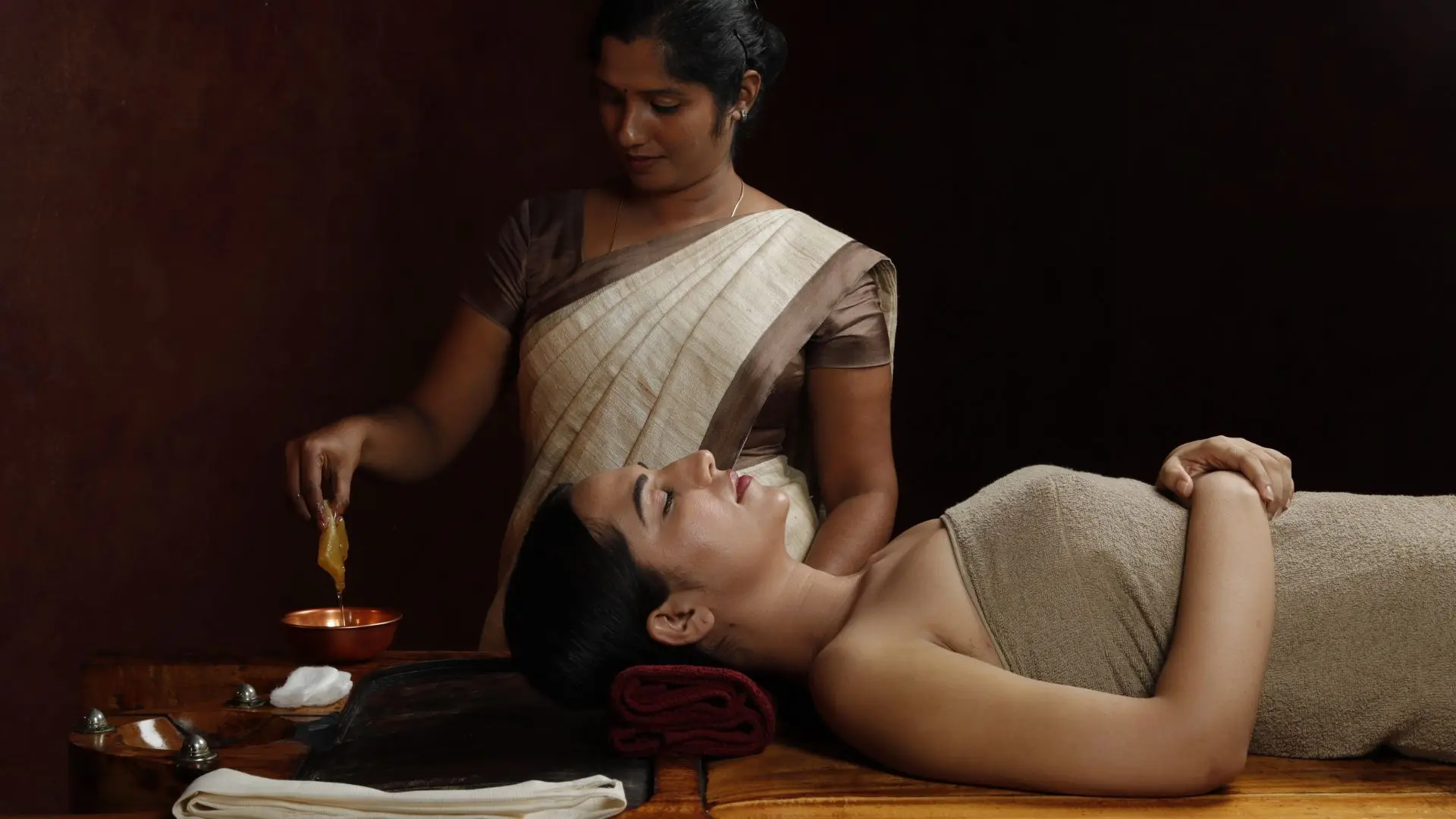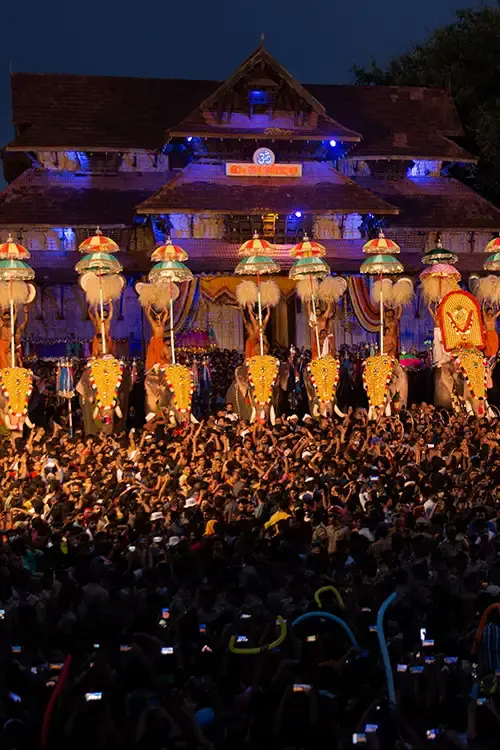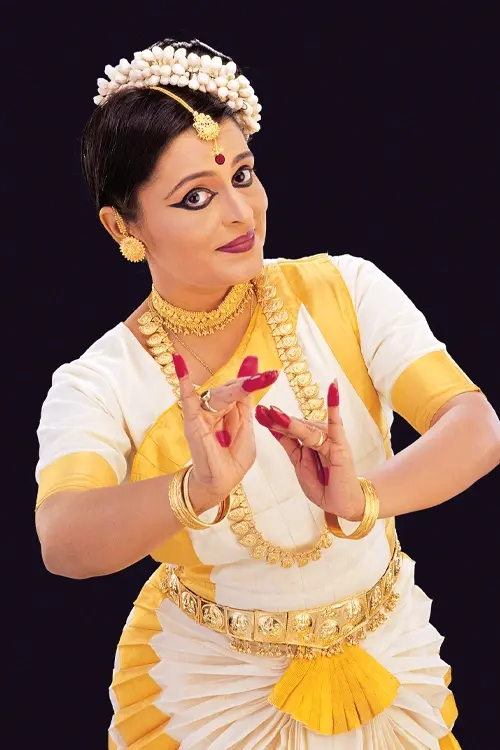Enchanting Kerala
Kathakali
Published in Newsletter Issue No. 204 - August 2010
Kathakali the renowned dance-drama of Kerala represents the pinnacle of aesthetic perfection achieved by the rich tradition of performing arts in the region. In Kathakali, one can witness the harmonious interplay of excellence in acting (abhinaya), music and literary beauty. This classical dance-drama of Kerala also stands apart for the kind of elaborate make-up that it employs. It is an art form that literally takes the audience to a different world, where gods and demons, heroes and heroines, birds and beasts, the animate and the inanimate all interact.
History and evolution
Kathakali has been inspired by many forms of performing arts belonging to the classical, ritual, folk and martial traditions of Kerala. Sanskrit theatre like Kutiyattam and ritualistic art forms like Krishnanattam, Ashtapadiyattam, Mudiyettu, Kalamezhuthu, Theyyam, Tira, and the martial art form of Kalarippayattu have in different proportions, contributed to the formation of Kathakali.
Innovations made to Raamanaattam, eventually transformed it into what came to be known as Kathakali. The king of Vettatthu Naadu, the present-day Tirur region is considered as the one who contributed significantly to the growth of Kathakali. His efforts were further strengthened by Kapplingadu Namboothiri. And in the formative days of Kathakali as an art form, the former ruler of Kottayam, known as Kottayathu Thampuran takes the credit for composing four Kathakali plays, based on stories from the epic - Mahabharata.
Aattakkatha - the literary text
The written texts namely Aattakkathas forming the basis of Kathakali performance consist of songs representing conversation or soliloquy of the various characters and verses in Sanskrit meters, providing stage directions and context relevant to the scene. This format of narrative is adopted from Krishnanattam and Asthapadiyattam.
The author of the earliest Aattakkatha was the ruler of Kottarakkara known as Kottarakkara Thampuraan, who lived in the latter half of the 17th century and the early 18th century. The majority of Aattakkathas derive their theme from epics like Ramayana and Mahabharata.
Music and orchestra
The Music in Kathakali is unique in the sense that the attractive elements of both Sopana style of music and Carnatic traditions of singing blend in it. Kathakali plays deal not only with religious devotion (Bhakti) but also with all other emotions relevant to different situations in life. This thematic variety of Kathakali songs is perhaps not equalled by any other genre of musical composition. The ideal accompaniments to Kathakali music are just four or five percussion instruments constituting the orchestra for the play. They are: chenda, chengila, maddalam, ilathaalam and idakka.
Make-up and costume
The wonderfully esoteric and elaborate make-up and costume in Kathakali require hours of skill and patience. For hiding most of the personal bodily features of individual actors and transforming them into mythological characters, Kathakali uses locally available materials like common earth-colors, rice-paste and lamp soot. The umbrella like skirts, colorful garments and glittering headgears magnify the supernatural character of the performance.
Kathakali characters
The characters in Kathakali fall into certain broad categories distinguished by their typical make-up. They include pacha (green), representing good natured characters like gods, noble kings etc. Another make-up type is kathi (red sickle pattern drawn on green paint) and represents amorous and heroic demons and chieftains. Kari (black) is another type for portraying shady characters. Thaadi (beard) is another type in which the 'red beard' portrays the wicked and the villainous, while the 'black beard' represents humorous characters. There is also the 'white beard' type for portraying noble-minded characters and the minukku (polished) character type, used to represent noble women, sages and Brahmins.
Staging Kathakali
In the earlier days, Kathakali performances were confined to the temple premises and in the courtyards of the affluent. Nowadays, Kathakali performances are conducted under the auspices of training centres, cultural organizations and as part of festivals. The stage for such performances will be a raised platform in an auditorium, theater or conference hall.
Click here to watch Kathakali video






